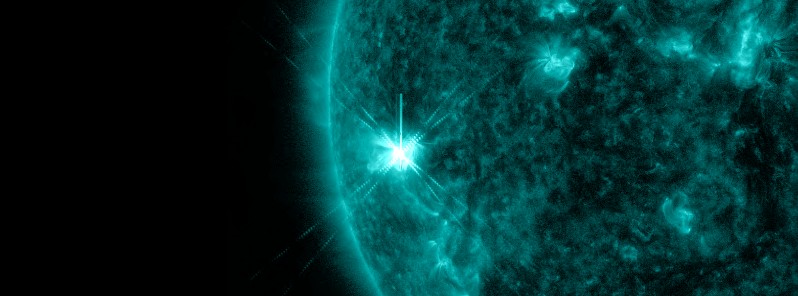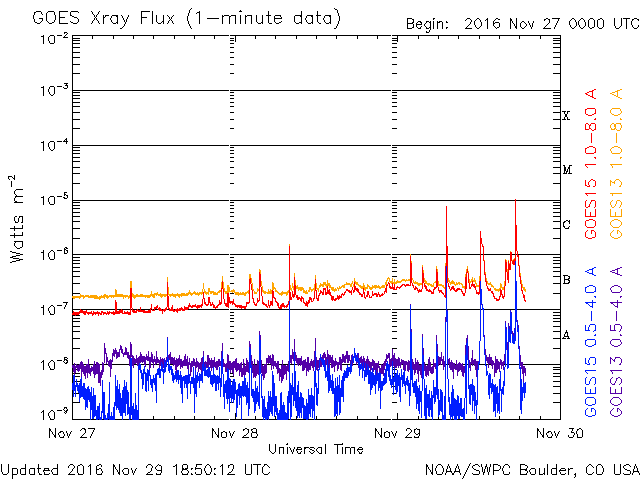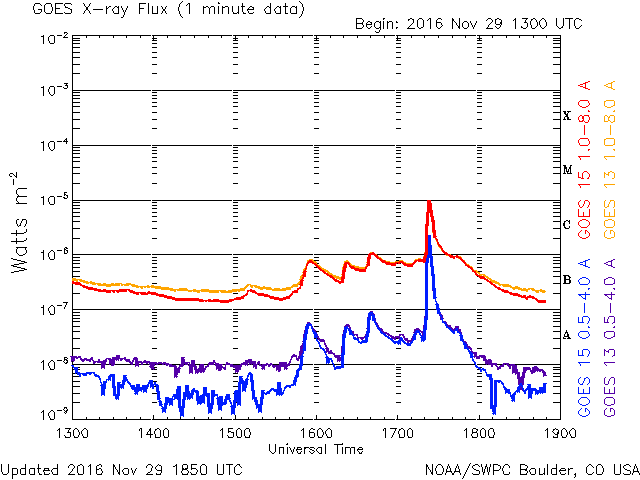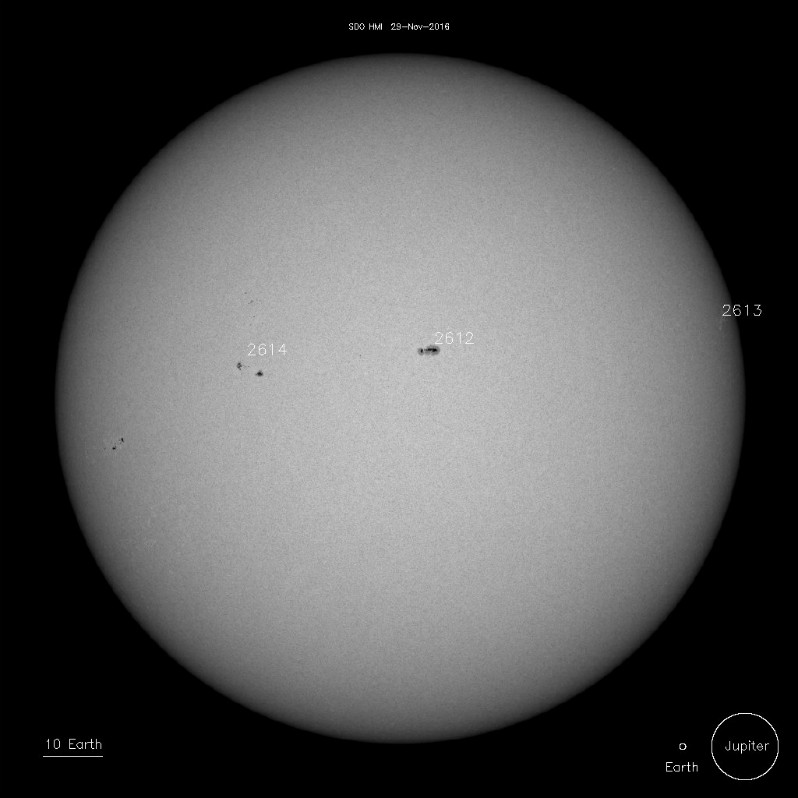Impulsive M1.0 solar flare erupts from Region 2615

An impulsive, moderately strong solar flare measuring M1.0 at its peak erupted at 17:26 UTC on November 29, 2016. The event started at 17:19 and ended at 17:26 UTC. This is the first M-class solar flare since M1.3 on August 7, 2016. With the approach of solar minimum, we haven't seen X-class solar flare since X2.7 on May 5, 2015.
Today's flare erupted from newly numbered region 2615, producing an R1 – Minor radio blackout impact. Possible impacts are weak or minor degradation of HF radio communication on the sunlit side of Earth, occasional loss of radio contact, and degraded low-frequency navigational signals for brief intervals.
There were no radio signals that would indicate a Coronal Mass Ejection (CME) was produced. Even if it was, it would not be Earth-directed.
This region has 'beta' magnetic configuration, making it capable of producing more notable flares.
Over the past 24 hours (by 12:30 UTC today), solar activity increased to low levels due to two C-class flares. The first was an impulsive C1 flare observed at 08:01 UTC on November 28 in the vicinity of departed Region 2611. The second was C7 from Region 2615 at 07:10 UTC today.



Over the next three days (November 29 through December 1), solar activity is expected to be very low, with a slight chance for C-class flares. This might change with the evolution of Region 2615.
The greater than 2 MeV electron flux reached high levels over the past 24 hours, with a peak flux of 41 607 pfu. The greater than 20 MeV proton flux continued at background levels.
The greater than 2 MeV electron flux is expected to be at high levels through December 1 due to positive polarity coronal hole high speed stream (CH HSS) influence.
The greater than 10 MeV proton flux is expected to remain at background levels.
Solar wind parameters are indicative of continued waning CH HSS influence and are expected to remain slightly elevated over the next three days.
The geomagnetic field is expected to be quiet to unsettled through November 30. This positive polarity CH HSS will rotate out of geoeffective position on December 1, bringing quiet geomagnetic field conditions.
Sunspots
There are currently 4 numbered sunspot regions on the Earth side of the Sun.


Sunspots on November 29, 2016. Credit: NASA/SDO HMI
2612 – Beta
2613 – Beta
2614 – Beta
2615 – Beta
Update:
A second M-class solar flare of the day erupted from the same region at 23:38 UTC. It measured M1.2.
Featured image: NASA SDO/AIA 131 at 17:24 UTC on November 29, 2016

Commenting rules and guidelines
We value the thoughts and opinions of our readers and welcome healthy discussions on our website. In order to maintain a respectful and positive community, we ask that all commenters follow these rules.